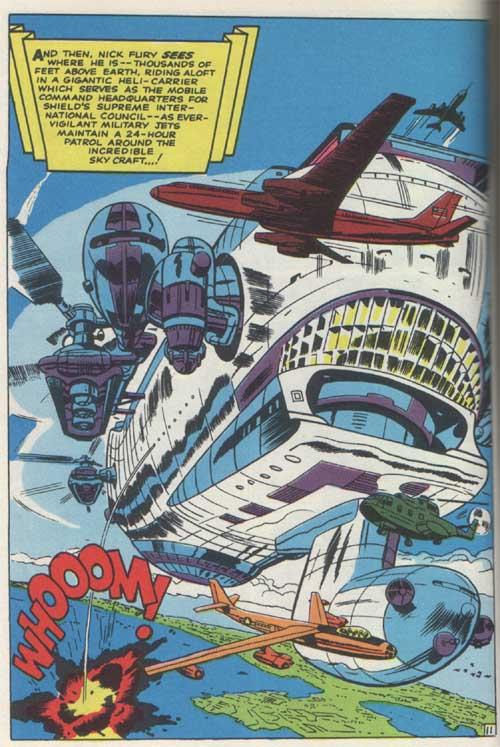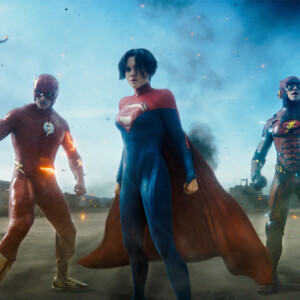From Concept Art To CG Model: How the Helicarrier Was Designed For ‘The Avengers’
For ‘The Avengers’, director Joss Whedon had the unenviable task of bringing the iconic S.H.I.E.L.D. Helicarrier to the big screen. Marvel told Whedon the Helicarrier’s presence was non-negotiable. The Flying Fortress is an integral part of Marvel lore, synonymous as S.H.I.E.L.D.’s floating headquarters. So Marvel was adamant that it had to be in it, and it had to play a prominent part in the film. Whedon recalled, “They wanted the Helicarrier and I wasn’t about to say no.”
But, as is common with comic book adaptations, Whedon was faced with translating the Helicarrier’s design from comic book to live-action blockbuster. For this, he first turned to his Art Department under the guidance of production designer, James Chinlund. Then VFX took over once the Helicarrier concept art was finalized. Janek Sirrs, the film’s visual effects supervisor, dealt with various VFX vendors, most notably, ILM who built the CG model of the Helicarrier.
The Helicarrier in the Comics
The Helicarrier debuted alongside S.H.I.E.L.D. in Strange Tales #135 in August 1965. Coming from the mind of Stan Lee and the pen of Jack Kirby, the Helicarrier caught readers imaginations straight away. Since then the Flying Fortress has gone through many different designs. Most designs over the years were variations of Kirby’s original design featuring a cumbersome, bulky undercarriage. It resembled a cross between an aircraft carrier and a giant glass zeppelin.
Whedon knew this design was problematic. “When it was first designed in the ’60s it had little propellers,” he said. “Since then they invented science and realized that might not actually stay up. You know it was always the idea that it was this floating fortress. And we talked a lot about you know how do we make it work. We went to a more traditional aircraft carrier design, partially because you know in the comics its very bottom heavy. It looks like this enormous glass palace that just couldn’t stay up. And you know the streamlined design that the guys came up with is beautiful and also you could just buy it. It was toeing the line between reality and fantasy.”
Though concept artists did design variations of this less than aerodynamic craft, Whedon did settle on a design based on Bryan Hitch’s Helicarrier in The Ultimates.

Bryan Hitch’s Helicarrier from The Ultimates became the blueprint for the same craft in ‘The Avengers’.
Marvel’s Art Department
With the look of the Helicarrier established, Marvel’s Art Department added real-world elements to add realism to the Helicarrier design. Janek Sirrs told FX Guide, “The trick to creating believable large vehicles such as the Helicarrier is to always incorporate features and aspects that are present in similar real-world objects (if they exist, that is).”
The Art Department used Nimitz-class aircraft carriers, which are a similar size to the Helicarrier, as a reference for the flight deck. As a result, audience members could relate to the Helicarrier even if they weren’t experts in Nimitz ships.
ILM’s Helicarrier Model
Once the final design was agreed upon, Marvel’s Art Department handed it to ILM, the principal VFX vendor on the film. Jeff White, ILM’s visual effects supervisor, oversaw the creation of the CG model of the Helicarrier, which was built by Rene Garcia, and painted by Aaron Wilson.
“Once we had the major forms correct, we started into all of the detail work,” Whit told Art of VFX. “The Helicarrier is seen from almost every angle and each time we’d start a new shot we needed to add additional geometry and texture detail.”
Photographs of aircraft carriers were studied, and elements such as carrier catapult launch strips, blast doors, moving vehicles, and digital double crew on the set were added to give this sense of scale. They even added a waterline stain to the hull.
“[S]imply having flight crew moving around on the deck instantly clues in the audience to the size of the Helicarrier as they know big a person is,” said Janek Sirrs to FX Guide. “Even without people present, everyday objects like handrails, windows, etc. all achieve the same purpose as you inherently have preconceived notions about how large they are, and the brain works out the rest relative to those familiar objects.”
White praised Janek Sirrs for his communication with the various VFX vendors working on the film. “He was great at keeping the various VFX houses working on the film on the same page with the extensive amount of asset sharing and intercut sequences that we had.”
ILM shared their asset with Scanline, who worked on the Helicarrier lift-off, and Weta Digital, for Hawkeye’s attack on Helicarrier’s third turbine. They would add additional damage or detail for their shots and then send it back to ILM. Both Weta’s and Scanline’s changes were added to the model for continuity.





